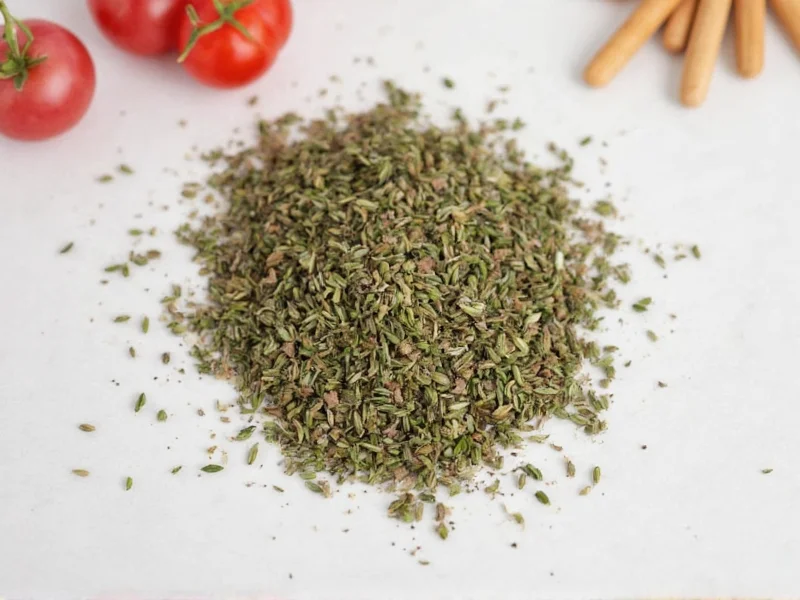Understanding herb conversions is essential for consistent cooking results. When a recipe calls for fresh thyme but you only have dried thyme available (or vice versa), knowing the proper measurement conversion prevents under-seasoning or overpowering your dish. The 3:1 fresh-to-dried ratio exists because the drying process removes moisture, concentrating the herb's flavor compounds.
Understanding the Fresh to Dried Herb Conversion Ratio
The standard conversion ratio between fresh and dried herbs is 3:1. This means that for every 1 teaspoon of fresh herbs, you'll need approximately 1/3 teaspoon of dried herbs. This ratio applies to most culinary herbs including thyme, rosemary, oregano, and sage.
For your specific query about 1/2 teaspoon fresh thyme to dried thyme conversion:
- 1/2 teaspoon fresh thyme = 1/6 teaspoon dried thyme (theoretical precise conversion)
- In practical kitchen measurement: 1/2 teaspoon fresh thyme = 1/4 teaspoon dried thyme
The slight adjustment from the precise 1/6 teaspoon to the more practical 1/4 teaspoon accounts for the difficulty of measuring very small quantities and ensures your dish receives adequate flavoring.
Why the Conversion Ratio Exists
Drying herbs removes approximately 70-85% of their water content, concentrating the essential oils and flavor compounds. Fresh thyme contains significant moisture that doesn't contribute to flavor, while dried thyme has had this moisture removed, leaving behind a more potent flavor profile.
This concentration means that dried thyme delivers more flavor per unit volume than fresh thyme. Using equal measurements would result in a dish that's either under-seasoned (when substituting dried for fresh) or overpoweringly herbal (when substituting fresh for dried).
Factors That Affect Herb Conversion Accuracy
While the 3:1 ratio provides a reliable starting point for fresh thyme to dried thyme conversion, several factors can influence the precise measurement needed:
- Herb quality: Freshly harvested thyme has more potent flavor than older sprigs
- Drying method: Oven-dried, air-dried, or commercially dried thyme may have varying potency
- Storage conditions: Dried thyme loses potency over time, especially when exposed to light and air
- Measurement technique: How tightly dried thyme is packed into a measuring spoon affects volume
- Recipe timing: Dried herbs often need longer cooking time to release flavors compared to fresh
Complete Fresh to Dried Herb Conversion Reference
| Measurement | Fresh Thyme | Dried Thyme |
|---|---|---|
| Pinch | 1/4 teaspoon | 1/8 teaspoon |
| 1/4 teaspoon | 3/4 teaspoon | 1/4 teaspoon |
| 1/2 teaspoon | 1 1/2 teaspoons | 1/4 teaspoon |
| 1 teaspoon | 1 tablespoon | 1/3 teaspoon |
| 1 tablespoon | 3 tablespoons (1/4 cup) | 1 teaspoon |
Practical Tips for Using Thyme in Your Cooking
When substituting dried thyme for fresh (or vice versa), consider these practical tips for best results:
- Adjust for cooking time: Add dried thyme earlier in the cooking process to allow time for rehydration and flavor release, while fresh thyme can be added later
- Taste as you go: Especially when converting measurements, taste your dish before final seasoning
- Consider the dish type: For delicate dishes like fish or eggs, use slightly less dried thyme than the conversion suggests
- Revive stale dried thyme: If your dried thyme has lost potency, toast it lightly in a dry pan before using
- When precision matters: For critical recipes, start with 75% of the converted amount and adjust to taste
Common Mistakes to Avoid with Thyme Conversions
Many home cooks make these errors when converting between fresh and dried thyme:
- Using equal measurements: Putting 1/2 teaspoon dried thyme when a recipe calls for 1/2 teaspoon fresh thyme will make your dish overly strong
- Not accounting for age: Old dried thyme has less potency, requiring slightly more than the standard conversion
- Overpacking dried herbs: Scooping dried thyme directly from the container compacts it, delivering more than intended
- Ignoring recipe timing: Adding dried thyme at the same stage as fresh thyme without adjusting for rehydration time
- Not tasting before final seasoning: Especially important when converting measurements for the first time
When to Choose Fresh vs. Dried Thyme
Understanding when each form works best can elevate your cooking:
Use fresh thyme when:
- Preparing delicate dishes like fish, eggs, or light sauces
- Adding at the end of cooking for a bright, fresh flavor note
- Creating garnishes or finishing touches
- Infusing liquids like vinegar, oil, or simple syrups
- When visual appeal matters (fresh sprigs look attractive)
Use dried thyme when:
- Preparing long-simmered dishes like stews, soups, and braises
- When fresh herbs aren't available
- Creating dry rubs for meats
- When you need consistent flavor throughout cooking
- For pantry staples that need long-term storage
Storing Thyme for Maximum Freshness and Potency
Proper storage affects how your thyme performs in conversions:
For fresh thyme:
- Store in the refrigerator with stems in water (like flowers)
- Cover loosely with a plastic bag
- Use within 1-2 weeks for best flavor
- Do not wash until ready to use
For dried thyme:
- Store in airtight containers away from light and heat
- Use within 6-12 months for optimal flavor (though safe indefinitely)
- Check potency by rubbing and smelling before use
- Consider freezing for long-term storage (up to 2 years)











 浙公网安备
33010002000092号
浙公网安备
33010002000092号 浙B2-20120091-4
浙B2-20120091-4